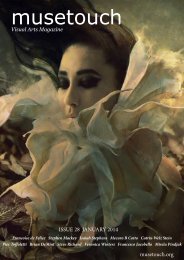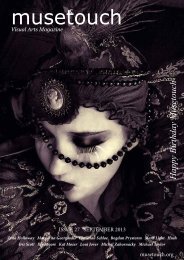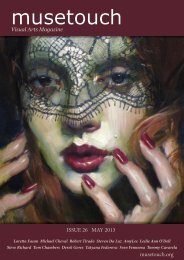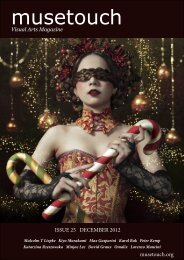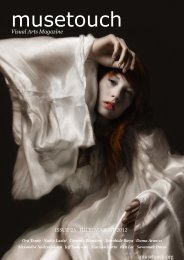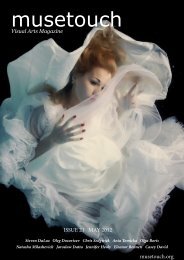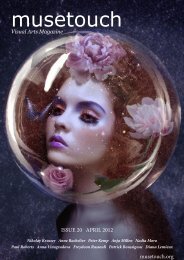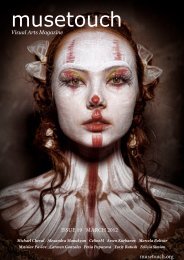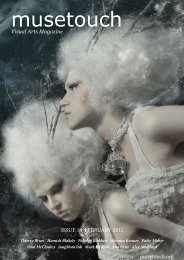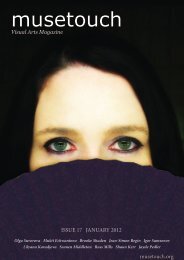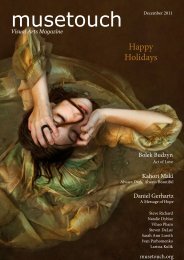musetouch_issue_24
You also want an ePaper? Increase the reach of your titles
YUMPU automatically turns print PDFs into web optimized ePapers that Google loves.
Brad Kunkle<br />
Born in rural Pennsylvania, Brad Reuben Kunkle spent his younger years exploring and romanticizing<br />
the beauty of the sparse countryside and the deep forests around him. From an<br />
early age he was drawn to the worlds of Maxfield Parrish and the Pre-Raphaelites --worlds,<br />
he says, “where a subtle, supernatural beauty seems to be hiding under the breath of women<br />
--worlds where something beyond our natural perception is waiting to be found.”<br />
He studied painting at Kutztown University mostly under George Sorrels, who was taught by<br />
a pupil of the 19th century Academic painter, William Adolphe Bougereau. Filled with academic<br />
principles, Brad felt confident in his ability, but stifled by the structure of schools and<br />
dissatisfied with the boundaries of traditional imagery. In an effort to discover his own artistic<br />
sensibilities, he worked as a commission-based portraitist, and began an almost decade-long<br />
journey of continued self-instruction and independent study.<br />
Brad was searching for an unnatural quality in his paintings, and it was ironically discovered<br />
by reducing his processes to the elements of painting he felt came most natural to him.<br />
His minimal palette is inspired by the grisailles of early European masters and the haunting<br />
quality of antique photographs and daguerreotypes. “Grisaille has a mysterious quality to it,<br />
and that mysterious quality is also at times carried into the way I will treat an object or a dress.<br />
Sometimes I like to give just enough information for the viewer to finish the details of what they<br />
are seeing.”<br />
As a decorative painter in his mid twenties, he leafed entire walls in copper. He was beguiled<br />
by the shifting, life-like nature of the surfaces, and began to incorporate gilding in his work.<br />
This proved to fulfill the unreal quality he had been looking for to convey his moody, romantic<br />
ideas of human nature and ritual.<br />
“The use of gold and silver in my paintings serve two main functions --the first being symbolic.<br />
Gold and silver serve as symbols in many ways but to begin with, they are ‘material’ symbols in<br />
harsh contrast to the spiritual or intangible aspects of life. The shifting of the leafed skies and<br />
wallpapers are also symbolic of the ever-changing world we live in. Furthermore, gold is the<br />
single most controversial element in the history of mankind. It causes wars, brings death, happiness<br />
and beauty - symbolizes love, power, greed, and religion...it’s symbolic properties are just as<br />
malleable as it’s physical properties.<br />
The second function of the leaf is to react directly with the viewer. As one walks across a room or<br />
dims the lights, they are affecting the painting and the painting is affecting them. The paintings<br />
become a living, breathing thing to me when the leaf is shifting and the oil is quiet. The art literally<br />
becomes interactive and can give the work a supernatural quality. The use of grisaille, or an<br />
adaptation of grisaille, against the leaf can give the sense of a very surreal space and unnatural<br />
depth within the paintings.”<br />
<strong>musetouch</strong> 134




